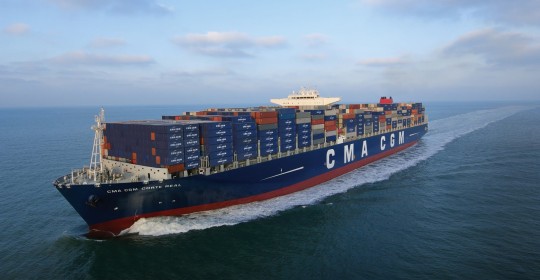
43 percent of shippers shifting cargo away from West Coast
Peter T. Leach, Editor-at-Large | Jun 12, 2015 11:57AM EDT
After the eight months of West Coast port congestion that crimped U.S. shippers’ supply chains, 43 percent of surveyed shippers who have negotiated annual trans-Pacific contracts said they will shift shipments to East Coast ports. But of those shippers who told JOC.com they would reroute cargo away from the West Coast, half said less than 5 percent of that freight would be permanently diverted through new contracts for 2015-2016. Despite the higher rates for East Coast routing, about a third of shippers surveyed said trans-Pacific contract rates were relatively unchanged from the last round. Still, one third of shippers said they left the bargaining table with contracts calling for rates increases of more than 3 percent, according to a recent JOC.com survey of 112 shippers. Shippers appear to have pulled back on how much cargo they plan to reroute away from the West Coast. In late February, sixty-five percent of shippers then said they would reroute more cargo away from West Coast ports this year and next. Of those shipper executives who said in February they would push more cargo to other ports, the majority, 23 percent, said they planned to shift between 10 and 30 percent of their freight away from the coast.
While the scale of shippers’ shift may have lessened, the same can’t be said for their frustration and anger over West Coast delays during the prolonged contract negotiations between the International Long shore and Warehouse Union and the Pacific Maritime Association. The two sides formalized a five-year agreement on May 22.
The scale of diversions is striking. Between January and April this year, East Coast ports grew their share of the import market to 44 percent, up roughly 5 percentage points since the end of last year, according to PIERS, a sister product of JOC.com within IHS Maritime & Trade. Meanwhile, West Coast ports’ share of U.S. container imports shrank from 54 percent to 49 percent in the first quarter.
Contract rates run the gamut The results of the trans-Pacific contract negotiations vary widely among surveyed shippers. Trans-Pacific freight rates remained relatively unchanged from 2014-2015 for 32 percent of respondents. But 31 percent of surveyed shippers reported increases of more than 3 percent.
Another shipper said it had negotiated contracts with its carriers that had no increases on eastbound
(ED Note: corrects original version from “westbound”) cargo from Asia to both the West and East coasts. Contracts with two of its five carriers call for increases of $150 per 40-foot-equivalent unit on eastbound cargo to Asia, which brought those carriers up to the level of the other three carriers.
“We were able to secure very attractive rates to the West Coast, but East Coast rates went up a lot, and interior locations were significantly increased,” said one shipper association based in Columbus, Ohio, who responded anonymously. Some of the larger shippers in the association are using non-vesseloperating common carriers to take advantage of “extremely low spot rates” to all coasts and interior locations that are lower than 2014-2015 contract rates. “All the bravado from the carriers about how they had to have the higher pricing ends up to be hogwash,” he said.
“West Coast rates are under pressure because the carriers are trying to get their customers back, so those rates are pretty stable,” said Dennis Melgert, director of global logistics for Octal, an Oman-based resin manufacturer. “Unfortunately one of my big trade lanes is the trans-Atlantic, and carriers are in a better position to get increases on imports because of the strong dollar.” Octal ships about 70,000 containers annually, of which about 9,000 to 10,000 are U.S. imports from the Middle East via East and Gulf Coast ports.
One large importer who delayed contract negotiations for three weeks got lower trans-Pacific contract rates from carriers but said this may cause problems later in the shipping season. “It’s a double-edged sword because if space gets tight, if I need extra space carriers are going to look at their rates,” said the shipper, who requested anonymity.
This shipper said rates from Asia to the West Coast remained flat year-over-year, but that rates from its preferred truckers at West Coast ports have increased. Because its ocean rates to the West Coast include bunker surcharges, its overall rates remained flat.
This shipper is shifting 30 percent of its cargo to East Coast ports this year to avoid any possible repeat of the problems that plagued its supply chain. It has not previously used the all-water route to the East Coast, but if it had, it would be paying contract rates that are about $200 per 40-footequivalent unit higher than last year, he said.
One shipping analyst previously told JOC.com that many West Coast contract rates are about the same as last year at $1,600 to $1,650 per 40-footequivalent unit.
For all-water shipments from Asia to the East Coast, the analyst said bigger importers have negotiated all-in rates including bunker charges of about $2,900 to $2,950 per FEU, up $200 from $2,700-$2,750 per FEU last year. Despite the higher truck rates reported by this shipper, a third of survey respondents said their intermodal rates to and from the West Coast will remain relatively unchanged under this year’s annual contract. However, 27 percent reported intermodal rate increases of 3 percent or more.
Most of the shippers who answered the survey said they had not been able to get more favorable terms relating to demurrage or detention of their cargo at West Coast ports, although 25 percent said they did get better terms.
Published on www.joc.com
Leave a reply →
